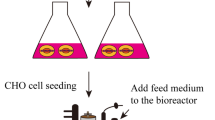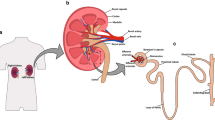Abstract
Primary human hepatocytes (PHH) are the “gold standard” for in vitro toxicity tests. However, 2D PHH cultures have limitations that are due to a time-dependent dedifferentiation process visible by morphological changes closely connected to a decline of albumin production and CYP450 activity. The 3D in vitro culture corresponds to in vivo-like tissue architecture, which preserves functional characteristics of hepatocytes, and therefore can at least partially overcome the restrictions of 2D cultures. Consequently, several drug toxicities observed in vivo cannot be reproduced in 2D in vitro models, for example, the toxic effects of acetaminophen. The objective of this study was to identify molecular differences between 2D and 3D cultivation which explain the observed toxicity response. Our data demonstrated an increase in cell death after treatment with acetaminophen in 3D, but not in 2D cultures. Additionally, an acetaminophen concentration-dependent increase in the CYP2E1 expression level in 3D cultures was detected. However, during the treatment with 10 mM acetaminophen, the expression level of SOD gradually decreased in 3D cultures and was undetectable after 24 h. In line with these findings, we observed higher import/export rates in the membrane transport protein, multidrug resistance-associated protein-1, which is known to be specific for acetaminophen transport. The presented data demonstrate that PHH cultured in 3D preserve certain metabolic functions. Therefore, they have closer resemblance to the in vivo situation than PHH in 2D cultures. In consequence, 3D cultures will allow for a more accurate hepatotoxicity prediction in in vitro models in the future.







Similar content being viewed by others
References
Agarwal R, MacMillan-Crow LA et al (2011) Acetaminophen-induced hepatotoxicity in mice occurs with inhibition of activity and nitration of mitochondrial manganese superoxide dismutase. J Pharmacol Exp Ther 337(1):110–116
Aleksunes LM, Augustine LM et al (2007) Influence of acetaminophen vehicle on regulation of transporter gene expression during hepatotoxicity. J Toxicol Environ Health A 70(21):1870–1872
Arndt K, Haschek WM et al (1989) Mechanism of dimethylsufoxide protection against acetaminophen hepatotoxicity. Drug Metab Rev 20:261–269
Bruschi SA (2004) Methods and approaches to study metabolism and toxicity of acetaminophen. In: Drug metabolism and transport. Totowa, NJ, pp 197–232
Cole SP, Deeley RG (2006) Transport of gluthathione and gluthathione conjugates by MRP1. Trends Pharmacol Sci 27(8):438–446
Decaens C, Durand M et al (2008) Which in vitro models could be best used to study hepatocyte polarity? Biol Cell 100(7):387–398
Eckl PM, Bresgen N (2003) The cultured primary hepatocyte and its application in toxicology. J Appl Biomed 1:117–126
Espinosa Bosch M, Ruiz Sanchez AJ et al (2006) Determination of paracetamol: historical evolution. J Pharm Biomed Anal 42(3):291–321
Fontana RJ (2008) Acute liver failure including acetaminophen overdose. Med Clin North Am 92(4):761–794, viii
Forster S, Thumser AE et al (2012) Characterization of rhodamine-123 as a tracer dye for use in in vitro drug transport assays. PLoS One 7(3):e33253
Glavinas H, Krajcsi P et al (2004) The role of ABC transporters in drug resistance, metabolism and toxicity. Curr Drug Deliv 1(1):27–42
Godoy P, Hengstler JG et al (2009) Extracellular matrix modulates sensitivity of hepatocytes to fibroblastoid dedifferentiation and transforming growth factor beta-induced apoptosis. Hepatology 49(6):2031–2043
Gomez-Lechon MJ, Castell JV et al (2008) An update on metabolism studies using human hepatocytes in primary culture. Expert Opin Drug Metab Toxicol 4(7):837–854
Gonzalez FJ (2005) Role of cytochromes P450 in chemical toxicity and oxidative stress: studies with CYP2E1. Mutat Res 569(1–2):101–110
Hewitt NJ, Lechon MJ et al (2007) Primary hepatocytes: current understanding of the regulation of metabolic enzymes and transporter proteins, and pharmaceutical practice for the use of hepatocytes in metabolism, enzyme induction, transporter, clearance, and hepatotoxicity studies. Drug Metab Rev 39(1):159–234
Hinson JA, Roberts DW, et al. (2010) Mechanisms of acetaminophen-induced liver necrosis. Handb Exp Pharmacol(196):369–405
Hirano M, Maeda K et al (2005) Bile salt export pump (BSEP/ABCB11) can transport a nonbile acid substrate, pravastatin. J Pharmacol Exp Ther 314:876–882
Jemmitz K, Veres Z et al (2010) Contribution of high basolateral bile salt efflux to the lack of hepatotoxicity in rat in response to drugs inducing cholestasis in human. Toxicol Sci 115(1):80–88
Kock K, Brouwer KL (2012) A perspective on efflux transport proteins in the liver. Clin Pharmacol Ther 92(5):599–612
Kullak-Ublick GA, Stieger B et al (2000) Hepatic transport of bile salts. Semin Liver Dis 20(3):273–292
Larson AM, Polson J et al (2005) Acetaminophen-induced acute liver failure: results of a United States multicenter, prospective study. Hepatology 42(6):1364–1372
Laupeze B, Amiot L et al (2001) Multidrug resistance protein (MRP) activity in normal mature leukocytes and CD34-positive hematopoietic cells from peripheral blood. Life Sci 68(11):1323–1331
Leslie EM, Deeley RG et al (2001) Toxicological relevance of the multidrug resistance protein 1, MRP1 (ABCC1) and related transporters. Toxicology 167(1):3–23
Li FC, Liu Y et al (2009) In vivo dynamic metabolic imaging of obstructive cholestasis in mice. Am J Physiol Gastrointest Liver Physiol 296(5):G1091–G1097
Li J, Wei DQ et al (2012) Molecular dynamics simulations of CYP2E1. Med Chem 8(2):208–221
Lin J, Schyschka L et al (2012) Comparative analysis of phase I and II enzyme activities in 5 hepatic cell lines identifies Huh-7 and HCC-T cells with the highest potential to study drug metabolism. Arch Toxicol 86(1):87–95
Lowry OH, Rosebrough NJ et al (1951) Protein measurement with the Folin phenol reagent. J Biol Chem 193(1):265–275
Madsen KG, Olsen J et al (2007) Development and evaluation of an electrochemical method for studying reactive phase-I metabolites: correlation to in vitro drug metabolism. Chem Res Toxicol 20(5):821–831
Nussler AK, Nussler NC et al (2009) The Holy grail of hepatocyte culturing and therapeutic use. In: Santin M (ed) Strategies in regenerative medicine. Springer International, Germany
Prot JM, Briffaut AS et al (2011) Integrated proteomic and transcriptomic investigation of the acetaminophen toxicity in liver microfluidic biochip. PLoS One 6(8):e21268
Ramachandran A, Lebofsky M et al (2011) The impact of partial manganese superoxide dismutase (SOD2)-deficiency on mitochondrial oxidant stress, DNA fragmentation and liver injury during acetaminophen hepatotoxicity. Toxicol Appl Pharmacol 251(3):226–233
Roelofsen H, Hooiveld GJ et al (1999) Glutathione S-conjugate transport in hepatocytes entering the cell cycle is preserved by a switch in expression from the apical MRP2 to the basolateral MRP1 transporting protein. J Cell Sci 112(Pt 9):1395–1404
Rost D, Kartenbeck J et al (1999) Changes in the localization of the rat canalicular conjugate export pump Mrp2 in phalloidin-induced cholestasis. Hepatology 29(3):814–821
Schutte M, Fox B et al (2011) Rat primary hepatocytes show enhanced performance and sensitivity to acetaminophen during three-dimensional culture on a polystyrene scaffold designed for routine use. Assay Drug Dev Technol 9(5):475–486
Suzuki N, Higuchi T et al (2002) Multiple active intermediates in oxidation reaction catalyzed by synthetic heme-thiolate complex relevant to cytochrome p450. J Am Chem Soc 124(32):9622–9628
Ullrich A, Berg C et al (2006) Use of a novel; standardized and validated human hepatocyte culture system for repetitive analyses of drugs: repeated administrations of acetaminophen reduces albumin and urea secretion. Faseb Journal 20(4):A630–A630
Yamaura K, Shimada M et al (2011) Protective effects of goldenseal (Hydrastis canadensis L.) on acetaminophen-induced hepatotoxicity through inhibition of CYP2E1 in rats. Pharmacognosy Res 3(4):250–255
Zaher H, Buters JT et al (1998) Protection against acetaminophen toxicity in CYP1A2 and CYP2E1 double-null mice. Toxicol Appl Pharmacol 152(1):193–199
Acknowledgments
This work was supported by the Federal Ministry of Research project “EmbryoTox” (BMBF 0315208E) and by the SET Foundation. We would like to thank Luc Koster for his help with the editing of this paper.
Author information
Authors and Affiliations
Corresponding author
Additional information
L. Schyschka, J. J. Martínez Sánchez, G. Damm and A. K. Nussler have equally contributed to this work.
Rights and permissions
About this article
Cite this article
Schyschka, L., Sánchez, J.J.M., Wang, Z. et al. Hepatic 3D cultures but not 2D cultures preserve specific transporter activity for acetaminophen-induced hepatotoxicity. Arch Toxicol 87, 1581–1593 (2013). https://doi.org/10.1007/s00204-013-1080-y
Received:
Accepted:
Published:
Issue Date:
DOI: https://doi.org/10.1007/s00204-013-1080-y




